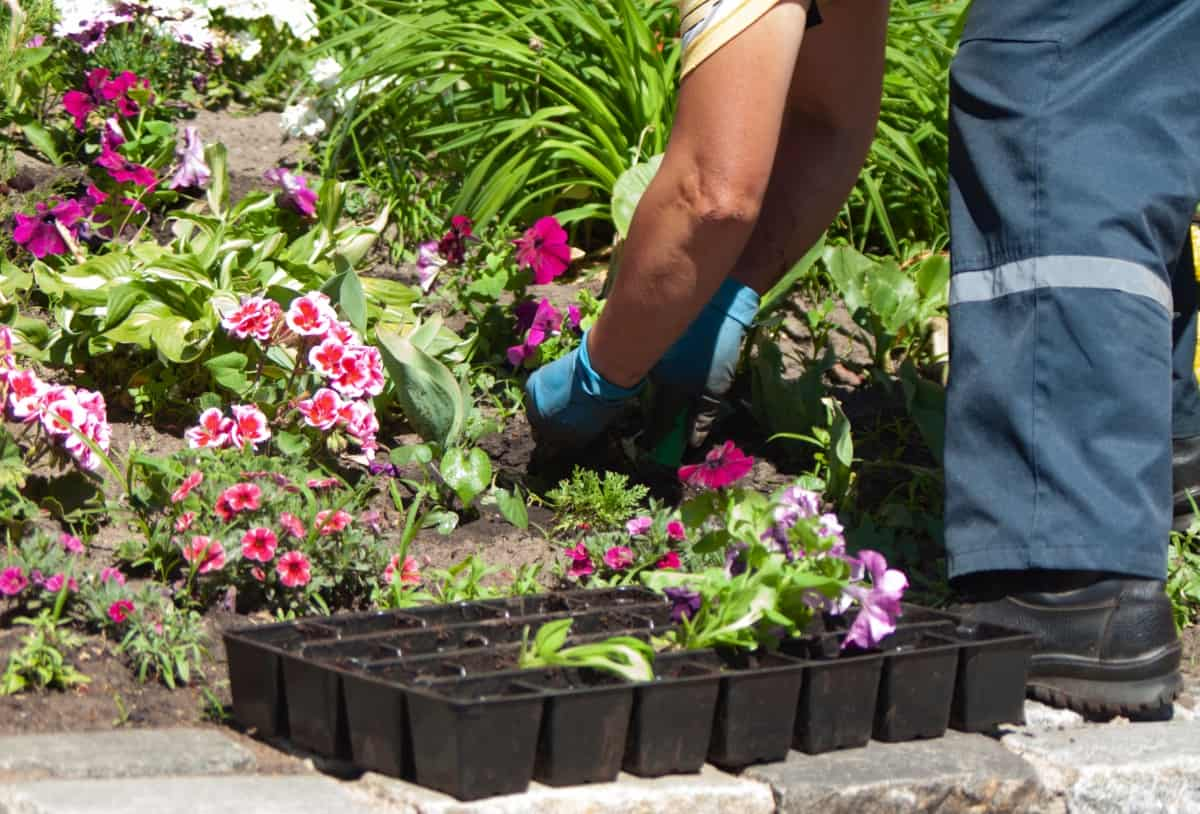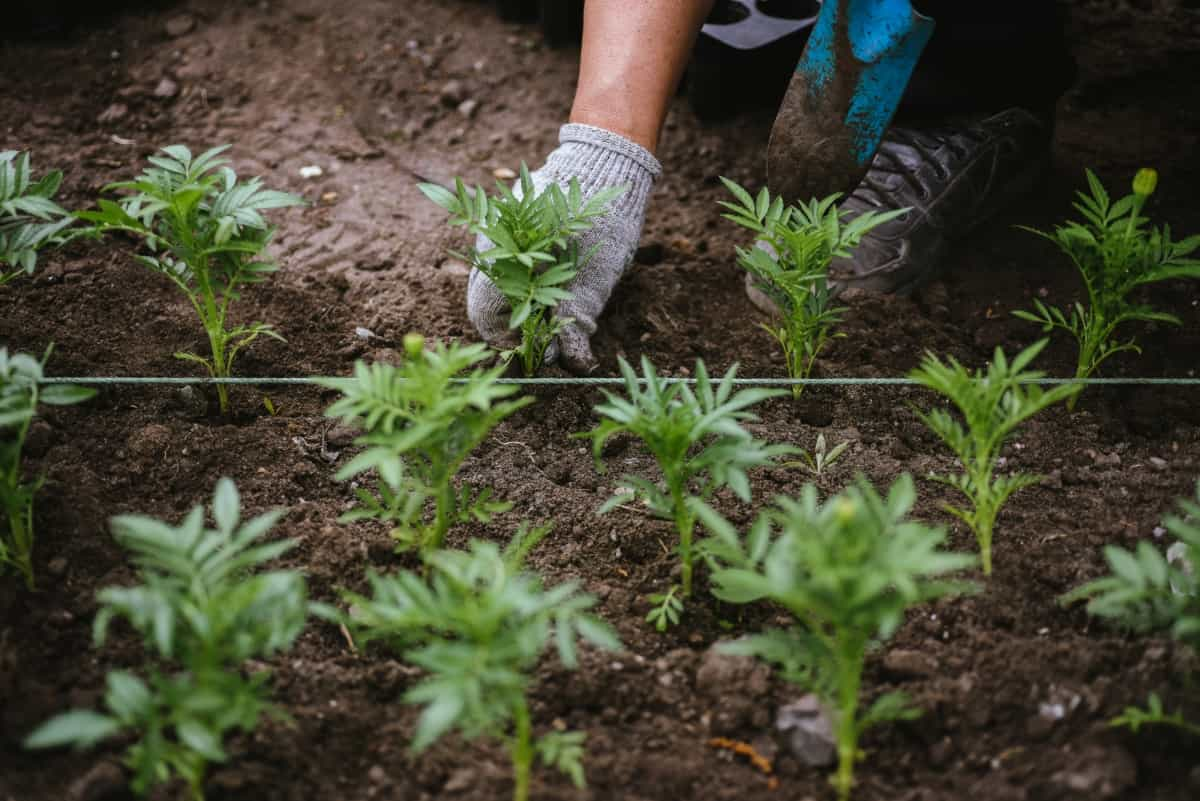Flower bed edging ideas have been a staple in garden designs for years, with the main goal of providing a clear distinction between different garden areas. If you’ve wondered, “What is the purpose of edging a flower bed?” or “What material is best for edging?” then you’re not alone. By introducing flower bed edging into your garden, you don’t just enhance the aesthetics; you also get a host of functional benefits.

Not only does it serve to keep grass out of flower beds, but the right edging can also offer the benefits of natural edging, creating a seamless blend with the environment. As we delve deeper into the world of flower bed edging, we will explore its advantages and the different materials you can choose from.
10 Benefits of Flower Bed Edging
Enhances Aesthetics
A beautifully maintained garden is an oasis for the eyes, and flower bed edging plays a pivotal role. The edging acts as a picture frame, highlighting the vibrancy and beauty of the flowers and plants. By delineating the flower beds, the contrast between the lush greens, vibrant flower hues, and the chosen edging material makes the garden pop. It’s a designer’s secret to make a space visually appealing and harmonious while ensuring that the natural beauty of the plants remains the centerpiece.
Defines Boundaries
A garden without defined boundaries can quickly become a jumble of overlapping plants and flowers. This is where the importance of edging becomes apparent. The subtle boundaries that edging introduces ensures each plant and flower has its designated space. It creates a sense of order, ensuring that pathways, lawns, and flower beds don’t infringe upon each other. Keeping grass out of flower beds effectively makes the entire landscape look organized and well-planned.
Controls Spreading
Some plants, particularly ground cover and certain flower species, tend to spread. Without proper boundaries, these can easily overrun other plants or move into areas they’re not wanted. Flower bed edging is a barrier, ensuring each plant stays within its designated space. This helps maintain the balance in a garden, ensuring that no single species dominates at the expense of others.
Prevents Erosion
Erosion is a common concern for many gardeners, especially in areas with sloped terrain or heavy rainfall. Without adequate protection, valuable topsoil can be washed away, leading to a depletion of nutrients for plants. Edging acts as a bulwark against this. Providing a physical boundary ensures that the soil within the flower beds remains intact, reducing the risk of erosion and ensuring that the plants have a nutrient-rich environment in which to thrive.
In case you missed it: Top 12 DIY Lawn and Garden Edging Ideas for Beginners

Facilitates Maintenance
Every gardener knows that maintenance is key to a beautiful garden. With flower bed edging in place, maintenance tasks such as mowing, weeding, and watering become easier. There’s less likelihood of accidentally damaging plants when mowing near the edges, and watering can be done more precisely, ensuring that each plant gets the right amount of water without wastage. Edging also simplifies the weeding process, as it’s easier to identify and remove unwanted plants.
Improves Weed Control
Weeds are the bane of any garden; without proper measures, they can quickly take over. Edging serves as a first line of defense against these invaders. Defining the space for each flower bed makes it harder for weeds to encroach upon the main garden area. Furthermore, with the best edging to keep grass out of flower beds, there’s a reduced risk of grasses turning invasive, ensuring that your garden remains weed-free and pristine.
Adds Structure and Organization
A garden is a living canvas; like any artwork, it benefits from a structured approach. Flower bed edging introduces this much-needed structure. It organizes the space, providing clear lines and pathways that guide the eye. Offering a clear distinction between different garden parts, each area gets its moment in the spotlight. This organization isn’t just beneficial from an aesthetic standpoint and aids in plant health, ensuring that each plant gets the right amount of sunlight, water, and nutrients.
In case you missed it: 10 Best Cut Flowers to Grow in Southern California: Easiest Cut Flowers to Plant

Increases Safety
Safety is paramount in gardening and landscaping, and flower bed edging plays a crucial role in this aspect. Having clearly marked boundaries reduces the risk of accidental trampling of delicate plants or flowers. This is particularly significant in gardens with thorny plants, toxic plants, or those with allergenic properties. For families with children or pets, edging serves as a visual cue, signifying areas where they should tread cautiously.
Moreover, edging can prevent accidental falls or trips by clearly defining pathways, especially in the evenings or low-light situations when visibility might be compromised. By ensuring that the different areas of your garden are well-demarcated, edging acts as a silent guardian, ensuring that your outdoor space is beautiful and safe.
Boosts Property Value
A well-maintained and aesthetically pleasing garden can significantly elevate a property’s overall appeal. Flower bed edging directly contributes to this enhancement in its role of adding structure and organization to a garden. Potential buyers or visitors often see a well-edged garden as a sign of meticulous care and attention to detail.
This perception can translate into a tangible increase in property value. Even if selling isn’t on the horizon, homeowners can take pride in knowing that their residence stands out in the neighborhood, thanks to the added beauty and order that flower bed edging brings. It’s an investment that pays off in aesthetic dividends and real economic terms.
Different Flower Bed Edging Material Options to Consider
The world of flower bed edging is vast, with many material options catering to different tastes, budgets, and functional needs. One popular choice is natural edging, including materials like stones, rocks, or wood. These materials blend seamlessly with the environment, giving a more organic look to the garden. Then there are metal edgings, which are durable and can offer a sleek, modern vibe.
In case you missed it: How to Get Rid of Bugs on Fresh-Cut Flowers: Natural Remedies

Brick and concrete edging, with their robustness, are suitable for gardens that require a more structured appearance. Plastic or rubber edging might be the answer for those seeking a more flexible option, as they can easily adapt to gardens with intricate shapes or curves. Finally, for the eco-conscious gardener, recycled material edgings are also available. Each material brings its charm and functionality, ensuring that every gardener has an option, irrespective of their vision or requirements.
Conclusion
Flower bed edging is not just a design choice; it’s a functional addition that brings many benefits. Whether you opt for the benefits of natural edging or choose other materials, the importance of this garden feature cannot be overstated. It’s a testament to the blend of design and function, ensuring that your garden remains beautiful and healthy for years to come.
- Ultimate Guide to Ossabaw Island Hog: Breeding, Raising, Diet, and Care
- Ultimate Guide to Juliana Pig: Raising Facts, Size, Diet, Care, and Lifespan
- Raising Lleyn Sheep: Disadvantages, Price, Uses, Characteristics, and Care
- Ultimate Guide to Meishan Pig: Breed Facts, Breeding, Raising, and Care
- Ultimate Guide to Teacup Pigs: Raising, Diet, Lifespan, Cost, and Care
- Guide to Raising Poll Dorset Sheep: Facts, Profile, Characteristics, Uses, and Care
- Ultimate Guide to Bighorn Sheep: Characteristics, Diet, Lifespan, Breeding, and Lifecycle
- Ultimate Guide to Raising Katahdin Sheep: Farming Facts, Breed Profile, Uses, and Care
- Ultimate Guide to Raising Oreo Cows: Belted Galloways Farming Facts, Profile, Uses, and Care